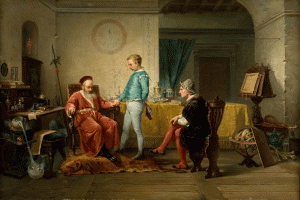The Four Horsemen: Apocalypse, Death and Disaster
Image: Stefano Della Bella, ‘Death on a Battlefield’, (c. 1646-48), etching, reg. no. 1959.4585, gift of Dr Orde Poynton, 1959, Baillieu Library Print Collection, University of Melbourne.
An exhibition currently on show at the National Gallery of Victoria includes 30 prints and rare books from the University of Melbourne’s Special Collections. The Four Horsemen presents images of death and disaster in prints, illuminated manuscripts, illustrated books and paintings from the 15th to the early 18th centuries:
The Four Horsemen: Apocalypse, Death and Disaster, 31 August 2012 – 28 January 2013, level 3, Robert Raynor Gallery Prints & Drawings, NGV International, 180 St Kilda Road
For more information see www.ngv.vic.gov.au/whats-on/exhibitions/exhibitions/the-four-horsemen
The publication accompanying the exhibition, co-authored and co-edited by the University’s Professor Charles Zika (Professorial Fellow in the ARC Centre of Excellence for the History of Emotions, School of Historical and Philosophical Studies), also includes ten illustrations from the Special Collection’s Prints collection:
The Four Horsemen: Apocalypse, death and disaster, by Cathy Leahy, Jennifer Spinks, Charles Zika, eds. Melbourne: National Gallery of Victoria, 2012.
The book can be accessed in the University of Melbourne Library: http://cat.lib.unimelb.edu.au/search/X?SEARCH=the+four+horsemen&SORT=D&searchscope=30








